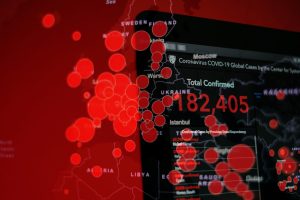White-Collar Crime: Trends and Legal Remedies in 2025
As we move towards 2025, the world of white-collar crime is rapidly evolving. Gone are the days of traditional embezzlement and money laundering schemes. With the rise of technology and globalization, the scope and complexity of white-collar crimes have expanded, presenting new challenges for law enforcement and legal professionals. From data breaches to corporate fraud, white-collar crime continues to be a ubiquitous threat to businesses and individuals alike. In this article, we will examine the current trends in white-collar crime and the legal remedies being implemented to combat these illegal activities in 2025.
The Evolution of White-Collar Crime
White-collar crime encompasses a wide range of non-violent offenses, typically committed for financial gain. Historically, these crimes were associated with individuals in positions of power, such as business executives and politicians. However, the proliferation of technology has opened new avenues for committing white-collar crimes. Cybercrime, in particular, has become a major concern for businesses and individuals, with hackers targeting sensitive data and financial information.
Furthermore, white-collar criminals are no longer restricted by geographical boundaries. The ease of cross-border transactions and the rise of cryptocurrency have provided opportunities for money laundering and other financial crimes to flourish on a global scale.
The Rise of Cybercrime
Cybercrime has become one of the most prevalent forms of white-collar crime in recent years. According to a report by Cybersecurity Ventures, cybercrime will cost the world $10.5 trillion annually by 2025. The increased reliance on technology and the internet has made individuals and businesses vulnerable to cyberattacks, resulting in financial losses and reputational damage.
In response to this growing threat, governments and organizations are implementing stringent cybersecurity measures to protect against data breaches and cyber attacks. In 2025, we can expect to see an increase in cybersecurity regulations and stricter penalties for those found guilty of cybercrime.
The Impact of Globalization
The globalization of the economy has also had a significant impact on white-collar crime. The growing interconnectedness of financial systems has made it easier for criminals to move money across borders and evade detection. As a result, we have seen an increase in money laundering, tax evasion, and other financial crimes.
To combat these activities, international cooperation and collaboration between law enforcement agencies have become crucial. In 2025, we can expect to see more concerted efforts to address cross-border white-collar crime, such as the sharing of financial information between countries and the implementation of anti-money laundering measures at a global level.
Legal Remedies for White-Collar Crime
The legal system has been constantly adapting to keep up with the changing landscape of white-collar crime. As we move towards 2025, we can expect to see a continued evolution of legal remedies to address these offenses. Let’s take a look at some of the measures being implemented.
Increased Regulatory Oversight
The government has taken a more active role in regulating industries and businesses to prevent white-collar crime. In the financial sector, for example, there has been an increase in regulatory oversight to ensure compliance with anti-money laundering laws. In 2025, we can expect to see stricter regulations in other industries as well, such as healthcare and technology, to prevent fraud and other financial crimes.
Stiffer Penalties
To deter individuals from engaging in white-collar crime, there has been a trend towards stiffer penalties and harsher punishments. This includes longer prison sentences and heavier fines for those found guilty of financial crimes. In addition, there has been a push for corporate liability, making it easier to hold companies accountable for the actions of their executives and employees.
Embracing Technology
Technology has also been embraced as a tool for preventing and detecting white-collar crime. Advanced data analytics and artificial intelligence are being utilized to identify patterns of fraudulent activities and flag suspicious transactions. In 2025, we can expect to see the continued integration of technology in the fight against white-collar crime.
In Conclusion
As we approach 2025, the landscape of white-collar crime will undoubtedly continue to evolve. From cybercrime to money laundering, new trends will emerge, presenting new challenges for law enforcement and legal professionals. However, with the implementation of stricter regulations and advanced technological solutions, we can hope to see a decrease in white-collar crimes in the years to come.





